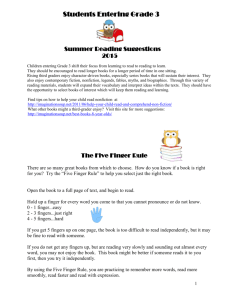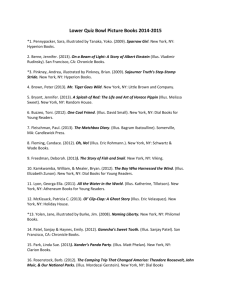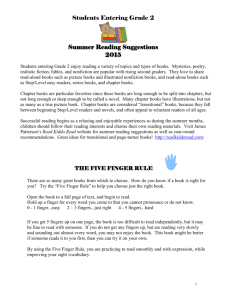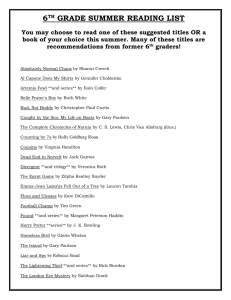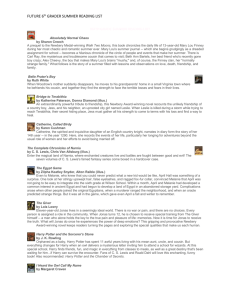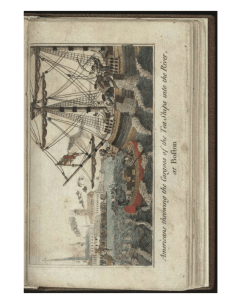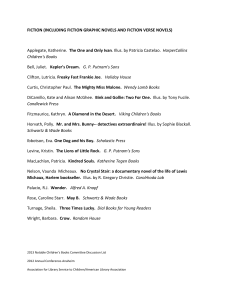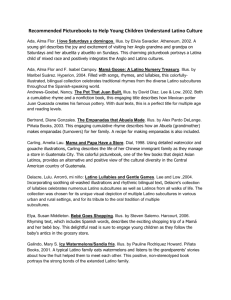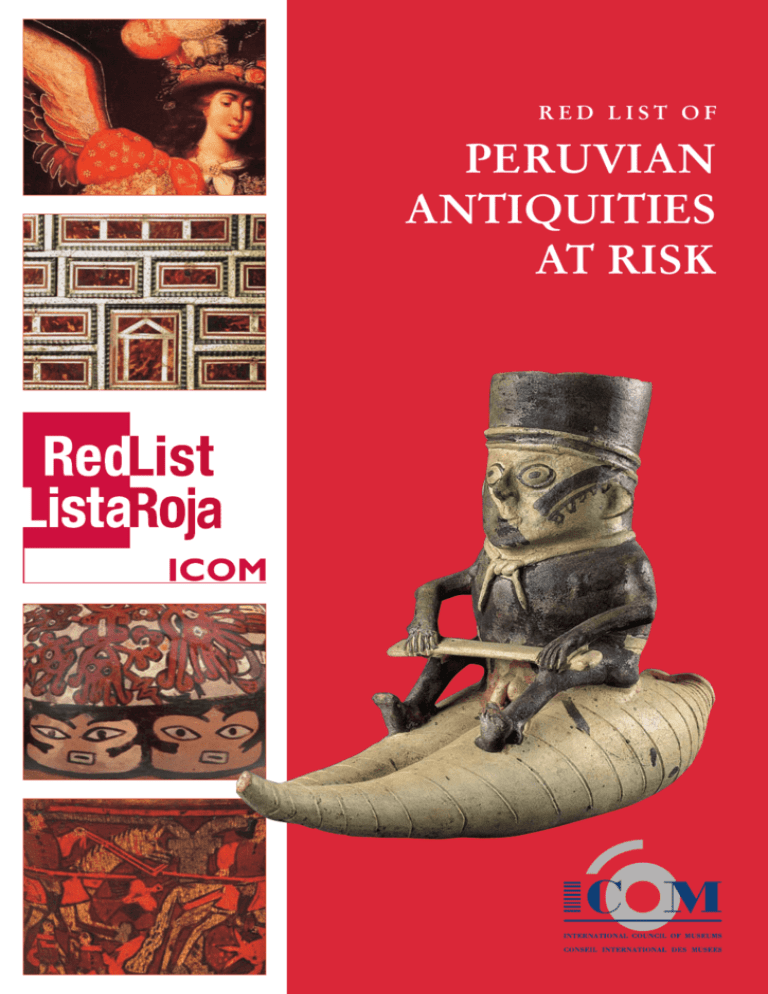
RED LIST OF
PERUVIAN
ANTIQUITIES
AT RISK
Introduction
Objective
The cultural heritage of Peru includes easily
identifiable and unique objects of the great
pre-Columbian civilizations, of the times of
the Viceroyalty, and of the Republican era.
This Red List has been developed to assist
museums, dealers in art and antiquities,
and collectors, as well as customs and law
enforcement officials in the identification of
objects that may have been illicitly exported
from Peru. To facilitate identification, the
List describes several categories of objects
at risk of being illicitly traded on the antiquities
market. These objects are protected under
Peruvian legislation banning their export
and sale. Therefore, ICOM appeals to
museums, auction houses, dealers in art
and antiquities, and collectors not to purchase
such objects without first having checked
thoroughly their origin and provenance
documentation.
Despite the protection afforded by national
legislation and international instruments,
the cultural wealth of Peru is affected by
looting and illicit trade. Between 2004 and
2006, illicit exports of over 5,000 cultural
and natural objects were intercepted.
Nevertheless, the number of clandestine
excavations at archaeological sites has
increased, as have thefts from churches and
museums.
Illicit trade in Peruvian cultural property
causes irreparable damage to the country’s
heritage and identity, and constitutes a serious
loss for the memory of mankind.
Because of the great diversity of Peruvian
objects, styles, and periods, the Red List of
Peruvian Antiquities at Risk is not exhaustive,
and any antiquity that may have originated
in Peru should be subjected to detailed
scrutiny and precautionary measures.
The cultural heritage of Peru is protected by the following:
NATIONAL LEGISLATION
INTERNATIONAL INSTRUMENTS
Political Constitution of Peru (1993): Article 21
1970 UNESCO Convention on the Means of Prohibiting
and Preventing the Illicit Import, Export and Transfer
of Ownership of Cultural Property
Cultural Heritage of the Country General Act:
Act No. 28296 (2004) and its Regulations (2006)
Supreme Decree No. 007-2006-MTC,
Act No. 28404 - Regulations, Security of Civil Aviation Act
Decree Law No. 19414 (1972), Defence,
Conservation and Development of the Country’s
Documentary Heritage Act and its Regulations
Legislative Decree No. 635 (1991), Criminal Code: Title VIII
Legislative Decree No. 961 (2006),
Code of Justice Military Police of Peru
Convention of The Hague of 1954 and its two Protocols
(1954 and 1999)
Andean Community Decision 588 of 2004
1995 UNIDROIT Convention on Stolen or Illegally
Exported Cultural Objects
OAS Convention on the Protection
of the Archaeological, Historical, and Artistic Heritage
of the Nation (Convention of San Salvador of 1976)
BILATERAL AGREEMENTS WITH:
Argentina, Bolivia, Brazil, Chile, China, Colombia, Costa Rica, Dominican Republic, Ecuador, Egypt, El Salvador,
Guatemala, Honduras, Hungary, Mexico, Nicaragua, Panama, Paraguay, South Africa (pending), Switzerland, Turkey,
United States of America, and Uruguay.
http://www.rree.gob.pe/portal/cultural.nsf/C04F68E40CD4043C05256E3D0005D1D0
National Institute of Culture of Peru: http://inc.perucultural.org.pe/
R E D
L I S T
O F
P E R U V I A N
THE RED LIST COVERS THE FOLLOWING CATEGORIES:
(As of the date of this printing, these images do not represent stolen objects. Rather,
they serve to illustrate the categories of objects which are the target of illicit traffic.)
PRE-COLUMBIAN PERIOD
Textiles
Textiles with repeating designs and colours. They may be
made of wool or cotton, with feathers or metal.
1
3
A/ Quipus: sets of knotted strings hanging from a main cord.
[illus. 1]
B/ Textiles: mantles of various shapes, decorated with brilliant
colours, geometric designs and mythical characters. [illus. 2]
C/ Feather weavings: tunics and textiles (or fragments) into
which are woven coloured feathers. [illus. 3]
2
1. Inca Armatambo Quipu, 1450-1532 AD, 134 x 80 cm. © MNAAHP
2. Paracas mantle, Early Nasca, 200 BC, 265 x 157 cm. © MNAAHP
3. Nasca feather weaving, 200 BC-600 AD, 85 x 64 cm. © MNAAHP
3
Metals
Ornaments, vessels and figurines made of gold, silver and copper.
They may have inlaid semi-precious stones.
4
A/ Masks: stylized face of sheet metal. Typically they have
almond-shaped eyes and attached or hanging elements. They
may retain traces of red pigment. [illus. 4]
4. Sicán gold mask, 900-1100 AD, 29 x 54 cm. © Museo Nacional Sicán
B/ Ear ornaments: ornaments designed to be worn through the
ear lobes. [illus. 5]
7. Moche frontal ornament, 1st-7th cent. AD, 22.4 x 25.6 cm.
© Museo Larco
C/ Nose ornaments: objects with two hooks to hold them
between the nostrils. [illus. 6]
D/ Headdress elements: gold or silver circular or semicircular
decorated objects, worn on the head. [illus. 7]
5. Moche ear ornaments, 1st-7th cent. AD, 12.7 x 4.0 cm. © Museo Larco
6. Moche nose ornament, 1st-7th cent. AD, 3.4 x 12.7 cm. © Museo Larco
5
6
7
N
A N T I Q U I T I E S
Ceramics
A T
R I S K
9
8
Fired clay vessels of various shapes with incised, modeled,
molded, and painted designs.
A/ Pictoral vessels: decorated with vivid colours, geometric
designs, and mythological figures. [illus. 8]
B/ Sculptural vessels: in the shape of fruit, animals, humans
or gods, in various positions. [illus. 9]
C/ Figures: standing male or female figurines; usually naked.
The best known are the “cuchimilcos” of the Chancay culture.
[illus. 10]
8. Nasca polychrome vessel, 2nd cent. BC - 6th cent. AD, 11.0 x 14.3 cm.
9. Moche warrior, 1st-7th cent. AD, 37 x 20 cm.
10. Chancay Cuchimilco, 10th-15th cent. AD, 59.8 x 31.6 cm.
© MNAAHP
12
10
Semi-precious stones
Figurines and small objects usually made of turquoise.
Necklaces and ornaments with lapis-lazuli, quartz, amethyst,
and sodalite. [illus. 11]
Stone
11
Sculptures, tools, weapons and stelae of all sizes, with various
designs. [illus. 12]
11. Wari turquoise figurine,
600-1000 AD, 3.72 x 1.94 cm.
© MNAAHP
12. Pukara sculpture, 200 BC-200 AD,
200 x 75 cm. © MNAAHP
Wood
Sculptures, utensils and vessels, painted or decorated with inlaid
shell or stone.
A/ Oars: the blade of the oar is usually smooth, and the upper
shaft and top are usually carved. [illus. 13]
B/ Masks: human faces often with red pigment, and with inlaid
shell eyes. Some have human hair, textile, and feather elements.
[illus. 14]
14
14. Chancay mask, 10th-15th cent.
AD, 17 x 18 cm. © MNAAHP
13
Fossils
Petrified remains of vertebrates (shark teeth, fish or bird bones),
invertebrates (molluscs and trilobites), or plants. [illus. 15-16]
15
13. Detail of Chincha ceremonial
oar, 1000-1400 AD, oar:
229 x 22.9 cm. © MNAAHP
16
15. Oyster, ammonites and urchin, Albian/Coniacian. © INC
Human remains
Mummies or bones; they may be wrapped in textiles forming
(complete or partial) funeral bundles. [illus. 17]
16. Fossilised cranium of Peruvian
Booby, Miocene/Pliocene.
© INGEMMET
17. Chachapoya-Inca funeral bundle,
1400-1600 AD. © Centro Mallqui
17
R E D
L I S T
O F
COLONIAL & REPUBLICAN PERIOD
P E R U V I A N
18. Colonial Kero, 16th-19th cent. AD,
28 cm. © Museo Regional de Cusco
Ethnografic objects
Ritual vessels or objects such as keros (carved wood vessels
decorated with scenes depicting people, animals, flowers and
geometric designs). [illus. 18]
18
Paintings
Painting on canvas, wood or metal generally depicting religious
themes: virgins, angels, saints and scenes of the life of Jesus,
with or without gold decorations. [illus. 19-20]
19
19. Archangel with harquebus,
18th cent. AD, 114 x 82 cm.
© MNAAHP
20. The Virgin with the
Holy Trinity, Saint Ursula
and Saint Catherine, 18th cent.
AD, 120.3 x 94.2 cm. © INC
20
Sculpture
Sculptures, reliefs or elements from retables. They represent
virgins, saints, crucified Christs, angels, and the Child Jesus.
They are carved in wood; or made of cloth, glue, and plaster.
[illus. 21]
Silvercraft
Liturgical objects such as altar frontals, monstrances, chalices,
flagons, incense burners, and crucifixes; and utensils or
various kinds of ornaments. They are made of cast, chiselled,
embossed, hammered, or filigree silver. Some are gold-plated
and may have pearls or precious stones. [illus. 22-23]
22
21
23
21. Archangel Saint
Michael, 18th cent. AD,
71.5 cm. © INC
23. Silver altar frontal, 18th cent. AD,
58 x 63 cm. © INC
22. Ornamental pins for
clothing or “tupus”, 18th cent.
AD, 27.4 x 4.5 cm. © INC
N
A N T I Q U I T I E S
Numismatics
Gold or silver coins and medals, circular and sometimes of
irregular shape, with inscriptions referring to the Crown of Spain
or to the Viceroyalty of Peru. [illus. 24-25-26-27]
24
25
26
A T
R I S K
24. Silver coin worth eight reales, “Columnaria”, 1753.
25. Silver coin worth eight reales, “Macuquina”, 1742.
26. Gold coin worth four escudos, “Pelucona”, 1752.
27. Silver coin worth one real, 1568.
© Museo del Banco Central de Reserva del Perú
27
Furniture
Carved wood furniture, either painted and gilded, or with wood
or mother-of-pearl inlays. Bargueños, or portable writing desks,
are of particular note, as well as music stands, chests, and coffers.
[illus. 28]
28
29
28. Writing desk, 18th cent. AD,
83 x 75.5 cm. © Cathedral of Lima
30
Drawings and engravings
Pencil and coal drawings, watercolours, and black and white
or coloured engravings. With religious or historic scenes.
[illus. 29]
Textiles
Liturgical vestments such as cassocks, dalmatics, and stoles,
among others, with flowers and religious symbols embroidered
in silver and gold thread. Also tapestries, bands, and cloth
with religious designs. [illus. 30]
29. Pancho Fierro watercolour,
19th cent. AD, 28 x 21 cm. © INC 30. Cassock, 18th cent. AD. © INC
Documents
Papers, maps, manuscripts and old printed material. They may
have letterheads, official seals, signatures, and the stamp of
the depository archive. [illus. 31-32]
32
31
31. Manuscript signed by Ramón Castilla on 19 April 1860.
© Archivo General de la Nación
32. Symbolo Catholico Indiano, printed in Lima
by Antonio Ricardo, 1598. © Biblioteca Nacional del Perú
Ceramics
Tiles, vessels, objects, and ornaments made of vitreous ceramics
with religious and floral motifs. [illus. 33]
33. Panel of tiles, 1656, 254 x 92 cm.
© Cathedral of Lima
33
IST
RED L
T RISK
A
S
E
I
T
I
U
Q
I
AN
OF PERUVI
ANT
LISTE
ROUGE
In order to combat the looting and destruction
of Peruvian archaeological sites and
ecclesiastical complexes, the International
Council of Museums has published this
Red List of Peruvian Antiquities at Risk
to assist legal authorities, build public
awareness, and promote international
cooperation in the protection of the cultural
heritage of Peru.
1
This Red List is the fifth in the series published by ICOM to date.* Red Lists describe types
and categories of objects protected under national legislation and international agreements
that are frequently illegally traded internationally. These Lists are developed by international
teams of experts in the archaeology and ethnology of the country or region of origin of the
objects. The illustrations show objects that, in the opinion of experts, belong to the categories
that are most likely to be looted and traded illicitly. Red Lists are designed to protect cultural
heritage at risk by assisting customs and law enforcement officials, dealers in art and antiquities,
museums and collectors to identify objects
of possible illicit origin. Potential buyers are
2
advised to refrain from any purchase unless
the items are accompanied by a certificate
of origin and documentation showing
provenance. Furthermore, customs, law
enforcement officials, and other authorities
are encouraged to take precautionary
measures with respect to any object of
suspect origin while its provenance is
investigated in detail.
1. Looted archæological necropolis, Central Coast, Peru.
© Huaca Malena Municipal Museum
2. Plundered Church of Coporaque, Cusco © INC
* Red List of African Archaeological Cultural Objects at Risk, 2000
Red List of Latin American Cultural Objects at Risk, 2003
Emergency Red List of Iraqi Antiquities at Risk, 2003
Red List of Afghanistan Antiquities at Risk, 2006
© 2007, ICOM, All rights reserved.
The International Council of Museums (ICOM) is the principal
international organization of museums and museum professionals
committed to the conservation, continuation and communication
to society of the world’s natural and cultural heritage, present
and future, tangible and intangible.
With over 24,000 members in 147 countries, ICOM is an international network of museum professionals expert in a wide
variety of disciplines.
Created in 1946, ICOM is a not-for-profit non-governmental
organisation (NGO) maintaining formal relations with UNESCO
and having a consultative status with the United Nations’
Economic and Social Council.
ICOM considers combating illicit trade in cultural goods to be one
of the core aims of its program of action. The Red List of Peruvian
Antiquities at Risk has been designed to prevent pillage, theft,
and the illegal export of cultural property from Peru; and to help
protect the country’s cultural heritage. The List is an addition to
the collection of Red Lists already published for Africa, Latin
America, Iraq, and Afghanistan.
This Red List was developed with the generous support of:
U.S. Department of State
Bureau of Educational and Cultural Affairs
Maison de l’UNESCO
1, rue Miollis - 75732 Paris Cedex 15 - France
Telephone: +33 (0)1 47 34 05 00 - Fax: +33 (0)1 43 06 78 62
Email: secretariat@icom.museum - Website: http://icom.museum
11/07 - TAM TAM TEAM - Cover: Balsero Chancay, 10th-15th centuries AD, 25 x 35 cm. © MNAAHP
http://icom.museum/redlist

